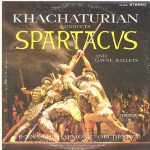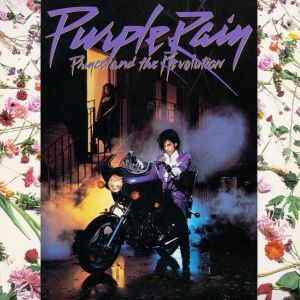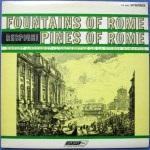 Hot Stamper Classical and Orchestral Pressings Available Now
Hot Stamper Classical and Orchestral Pressings Available Now
Our Favorite Orchestral Performances with Top Quality Sound
We played a few copies of the album we had sitting in the backroom and none of them quite worked for us. The sound was somewhat veiled and dry. (The 1s/1s pressing was the worst of the bunch, by the way.)
A decent record, not much more than that, and not really not worth putting in a shootout with the better pressings of the work we have discovered over the years.
Yes, we still have no Hot Stamper pressings of the work to offer, but we know they are coming, someday. Our current favorite is a performance by Mravinsky on DG from 1961.
It’s a “good, not great” vintage classical record, best played on an old school stereo system that can hide its shortcomings.
The much more revealing systems of today, like the one we employed to audition this very copy, simply make it too easy to spot its many faults.
Vintage Vinyl
We are not fans of vintage vinyl because we like the sound of old records. Lots of old records don’t sound good to us at all, and we review them by the score all over this blog.
We like old records because they have the potential to sound better than every other kind of record, especially the ones that have been made and marketed to audiophiles for the last thirty years.
We wrote about that subject in a commentary we called the big if. An excerpt:
The best of the best vintage recordings are truly amazing if you can play them right. That’s a big if.
In fact, it may just be the biggest if in all of audio.
We go on to discuss the wonderfully accurate timbre of the better vintage pressings, in contrast to the consistently inaccurate tonality of the Modern Heavy Vinyl pressing. It’s a long story but we think it is well worth your time if you are an audiophile looking for better sounding vinyl.
The following four things are best kept in mind when a pressing doesn’t sound like we remember it did, or think it should:
- Our standards are much higher now, the result of having spent decades critically listening to vintage classical pressings by the hundreds, if not the thousands.
- Our stereo is dramatically more revealing and more accurate than it was in the past, before 2007 certainly.
- Using the Odyssey machine and the Prelude Cleaning System, we not only clean but markedly improve the sound of old records in ways we never could before.
- Since no two records sound the same, maybe the one we played long ago actually did sound as good as we thought back then. The odds are against it, but we can’t say it’s not possible.
With all four of the above points considered, the current consensus is that LSC 2239 is very unlikely to be as good a record as we used to think it was.
The most likely explanation is that I was simply not able to judge the record properly at the time.
- I needed higher quality playback.
- I needed better cleaning technologies.
- I needed to learn how to do rigorous, repeatable, controlled shootouts.
In short, I needed to follow the advice found in the commentary I wrote after finally managing to put all of those things in place:




 The Music of Claude Debussy Available Now
The Music of Claude Debussy Available Now


